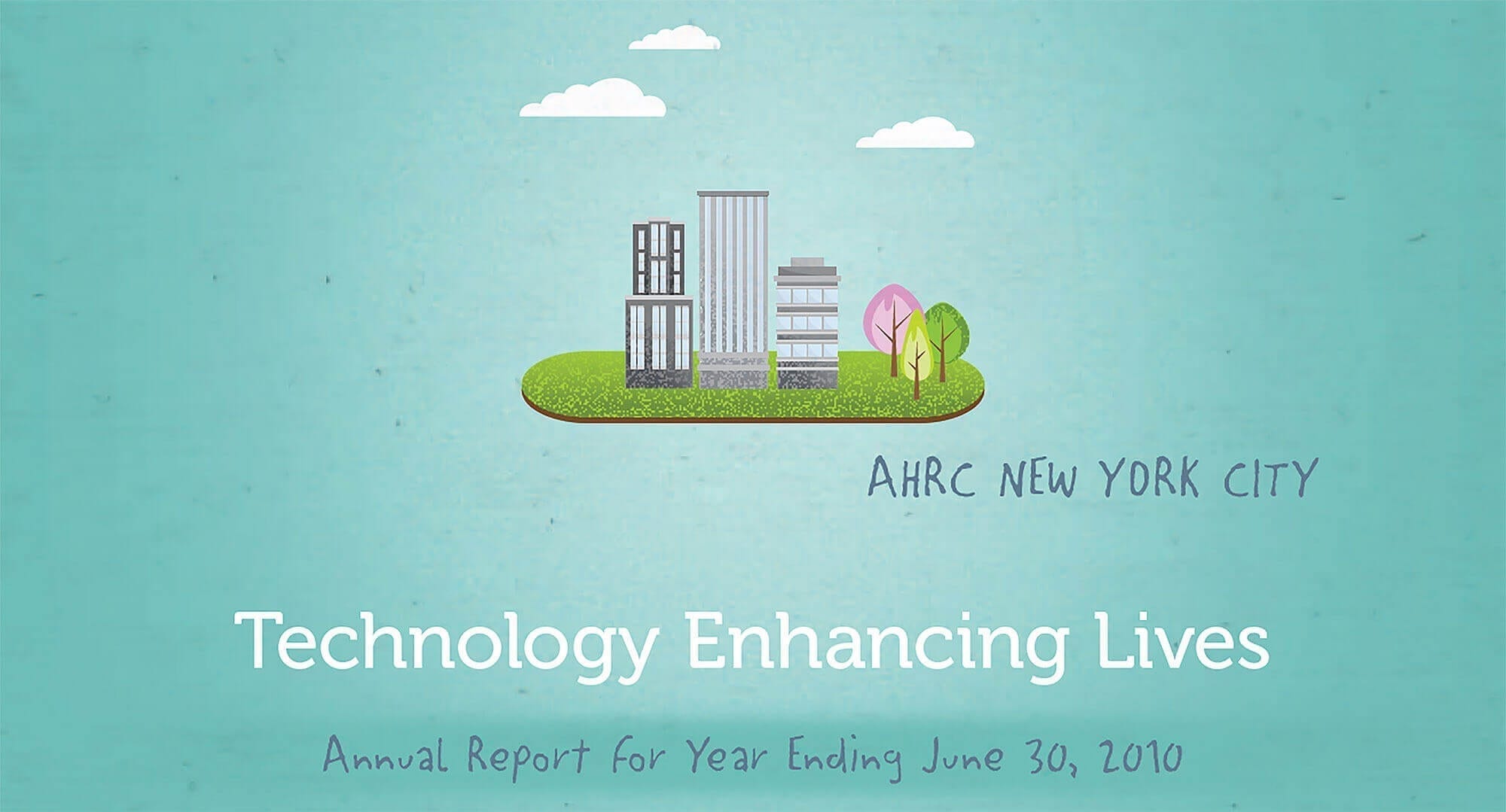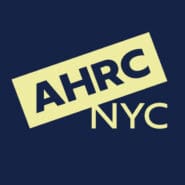AHRC New York City has invested in technologies that offer new opportunities in a wide variety of areas to people with disabilities. We share examples of technologies that are used by people with disabilities each day to enhance their lives, as they communicate about what matters to them and participate in physical and digital communities.
We are proud to announce the publication of AHRC New York City’s Technology Enhancing Lives, AHRC New York City’s Annual Report for the Year Ending June 30, 2010. (opens pdf file)
This report is dedicated to the memory of Curt Flaherty, Director of AHRC NYC’s Department of Day Services, who passed away in May 2011. Curt was a strong proponent of the opportunities that technology offered to people with developmental disabilities. He worked tirelessly to make these opportunities a reality.
OUR MISSION & OUR VALUES
Our Mission
AHRC New York City, a family governed organization, is dedicated to enhancing the lives of individuals with intellectual and developmental disabilities and their families.
Our Values
Each member of the organization is committed to promoting a culture that embraces:
Passion:
Committing wholeheartedly to the mission of the agency.
Respect:
Responding to all members of the AHRC community with courtesy, kindness and open and honest communication.
Integrity:
Making decisions based on fairness, honesty, morality
and ethical principles.
Diversity:
Respecting and appreciating the differences found among individuals with intellectual and developmental disabilities, their families and our colleagues.
Excellence:
Providing an environment in which distinction and merit are affirmed, celebrated and enhanced.
62 Years of Finding Ability in Disability
The organization that created the first schools, workshops, day treatment programs and community residences, continues to meet the needs of the individuals served in its programs. We offer individuals with intellectual and developmental disabilities a menu of supports, programs, and services tailored to meet their specific wishes and needs.
For infants, toddlers and children, AHRC offers: evaluations to determine the nature of a child’s delays; information and referral to programs; preschool programs for children with developmental delays; a specialized array of services for children with autism, (preschool, elementary and middle/high school) that utilizes Applied Behavioral Analysis (ABA), as well as other specialized techniques; speech, physical and occupational therapies; psychological counseling; Head Start classes; inclusive programs where children with disabilities learn alongside their peers without disabilities; and educational advocacy to ensure that all school-age children receive the services to which they are entitled.
For adults, AHRC offers: a variety of opportunities with varying degrees of structure and support, where adults – from young adults to senior citizens – can engage in activities during the day that will enhance their skills of daily living, work for pay, volunteer in the community and provide them with supports necessary for community exploration; supported employment in AHRC-run businesses, as well as opportunities for competitive employment; specialized services for persons with traumatic brain injuries; alcohol and substance abuse treatment; training to prevent domestic violence; residential opportunities in group homes, supervised apartments and independent settings, and residential services for medically frail individuals and those requiring 24/7 nursing services.
For individuals of all ages, and their families, services include: day camp, sleep-away camp and recreation programs; clinical services such as evaluation and testing, speech, physical and occupational therapies; case management and service coordination; counseling and mental health services; home care services; a variety of respite opportunities to give families a break from the job of caretaking; sibling services for typical children who have sisters and brothers with disabilities; legal services including guardianship, future planning and information regarding entitlements; family education; information and referral services.
A MESSAGE FROM THE 1ST VICE PRESIDENT
Dr. Melvin Gertner
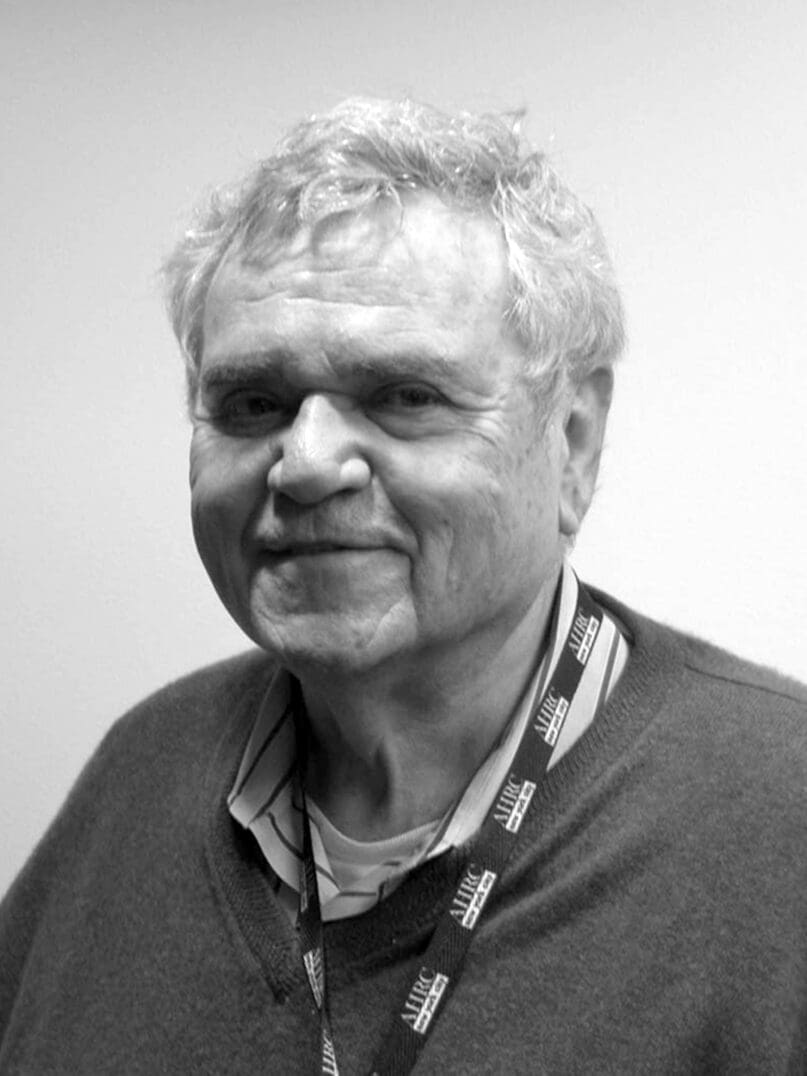
This has been a difficult year for AHRC New York City. After a serious illness, AHRC’s President, Arlene Pedone passed away in the last year of her three-year term of office. Arlene was a force to reckon with and will be greatly missed. Other individuals who were significant in our history also left us this year. Additionally, the political and fiscal arena in which we find ourselves today has never been as challenging.
In spite of these losses and difficulties, AHRC New York City has continued to find new and innovative ways to provide the services it is our mission to provide to individuals with developmental disabilities. The various uses of technology described on the pages of this report are such innovations.
Many of us – to one extent or another – are currently taking advantage of what is available to us through the use of technological devices that didn’t exist a few short years ago. We are using this technology to access information, to communicate and to make our lives easier in general. AHRC staff has been creative in finding ways to use technology to support the individuals served in our programs and they are benefitting just like everyone else.
As I prepare to embark on my first year as President of AHRC New York City, I am aware that the challenges we must surmount, challenges that are the result of the economic crisis we currently find ourselves in, are tremendous. But I am hopeful that we will persevere and continue to find ways to continue building a better life for individuals with developmental disabilities, as we have done for 62 years.
A MESSAGE FROM THE EXECUTIVE DIRECTOR
Michael Goldfarb

As I prepare to retire in the coming months, it is hard for me to believe that this will be the last annual report message that I will write as AHRC’s Executive Director. For more than thirty-five years, I have been writing annual messages to AHRC members and friends, informing them of the year’s accomplishments. As in the past, there is a great deal to report this year.
In spite of continued threats and actual cuts to funding, AHRC New York City has nevertheless grown enormously. Services for children and adolescents have grown with our schools expanding the number of children served and the development of collaborative ventures with universities and other city agencies. Supports and services for adults have evolved with the philosophy of Person Centered Planning taking center-stage in all development. Services for individuals of all ages have developed considerably. And the formation of a cross functional team to address the needs of individuals on the Autism Spectrum will help AHRC meet the intensive needs of the newest generation of individuals with developmental disabilities in the years to come.
As regards building the infrastructure for the future, this year has brought with it tremendous development in the areas of corporate compliance, quality of care and information technology. Internal audit functions have been enhanced, a new multi-year comprehensive electronic health record management system has been initiated, and new safeguards to ensure the safety of all individuals served have been put into place.
It is with pride and nostalgia that I prepare to retire. I know that what we have done together will be the wonderful basis upon which this organization will further evolve. I also know that AHRC’s Board of Directors and wonderful staff will make sure that this evolution moves in the right direction.
TECHNOLOGY ENHANCING LIVES
Always focused on enhancing the lives of individuals with developmental disabilities, over the past few years, AHRC New York City has invested in technology that offers new opportunities in a wide variety of areas to individuals with disabilities and all types and degrees of physical, as well as cognitive challenges.
Often, accomplishing daily tasks such as writing, talking with friends, going to the store, working or participating in recreational activities poses a challenge for people with disabilities. Assistive technology devices are tools that can be used to help circumvent these challenges and enable people living with disabilities to enhance the quality of their lives and be more independent.
In keeping with a person-centered approach to service planning AHRC has developed a lending library of technology devices which allows for trial usage of devices and software prior to assignment of a device to an individual user. This offers more latitude in choosing the right technology to meet an individuals needs.
Technology can physically open doors, and can also open doors of opportunity. The computer, for example, is an essential empowering tool; a way to make contact with and access the community. It is a pipeline for information and a gateway to the market place. It can offer recreation and fun, and can lead to gainful employment. With a variety of switches and software options, almost anyone can take advantage of the personal computer and other electronic devices – even people who cannot move a muscle or are intellectually challenged.
What follows on the pages of this report are a few examples of the technologies that AHRC New York City utilizes to better the lives of the individuals we serve.
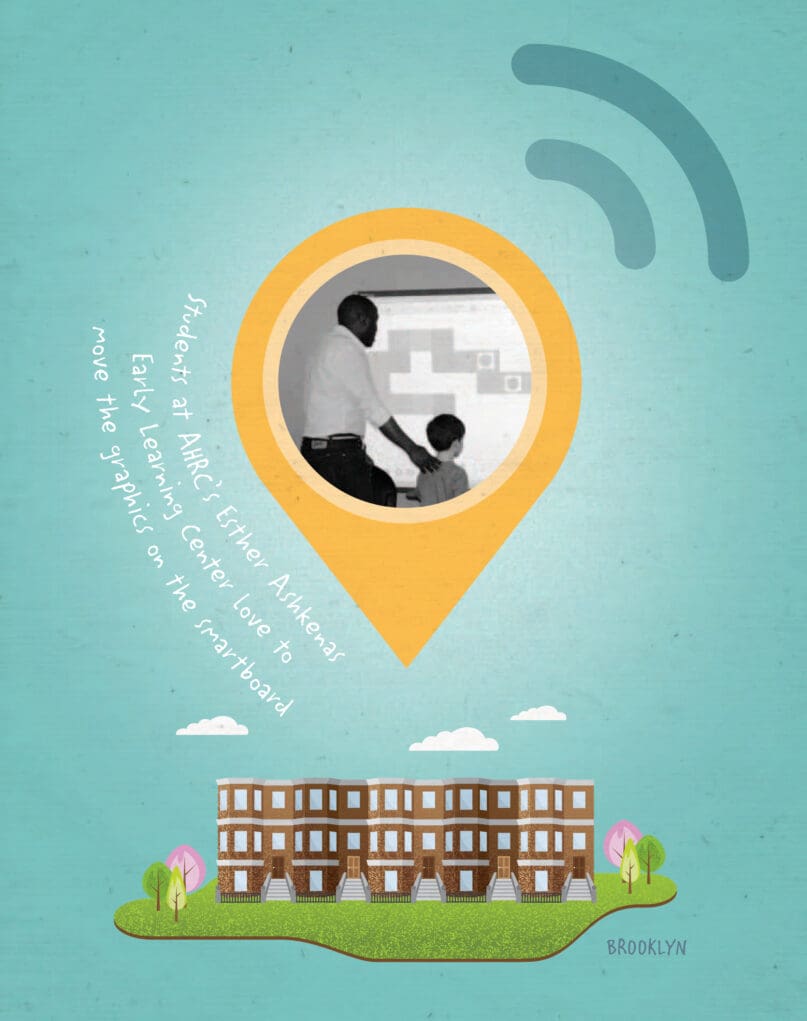
Use of Smartboards
AHRC’s six schools utilize technology to better engage students in learning. Rather than writing on a one dimensional blackboard, teachers are now using interactive Smartboards.
Smartboards are large white boards which are connected to a computer. Like a projector, the board displays whatever program the user has open on the computer screen. The interactive Smartboard is great for demonstrations to students of all learning and physical abilities.
They capture the class’ attention through colorful presentations, and encourage group involvement. With one touch of the computer screen, an individual with poor motor skills can see his or her work displayed on the board located in front of the classroom. An example of one interactive software package is Type Faster, which can be individually programmed, and assists in teaching students basic keyboard skills.
These boards have helped so much — in the past, students were always looking over the shoulders of others. With the Smartboard, everybody in the room is interacting — it really keeps the class alive.
Martyn Jones, Technology Trainer at the AHRC Middle/High School
While this technology empowers students, it also motivates staff to utilize multimedia resources and the Internet when planning. Teachers can use the companion Smartsoftware or can download Smartboard lessons created by colleagues from around the world.
Smartboards have also become an integral part of curriculum-based learning at AHRC’s Adult Day Programs. Individuals learn important things such as communication skills, community mapping, money management, health, safety and personal care skills, and problem solving. Staff and program participants utilize the boards to post information, current events, and facility schedules.
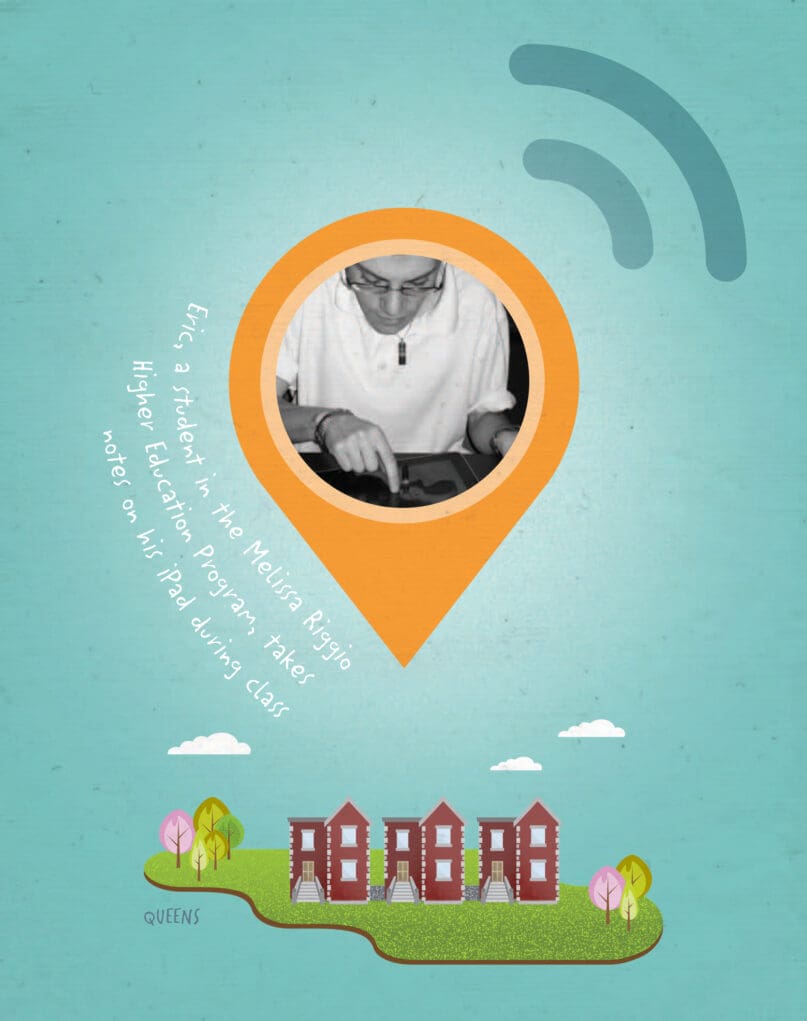
Use of iPods, iPads and Personal Computers
For individuals involved in programs in the community and not facilities, AHRC has purchased Apple iPods and iPads.
These portable tablet-like devices are “perfect for individuals with developmental disabilities, as today’s computers are still too complex for many people,” said Ken Cronin, Director of Assistive Technology.
The iPad and iPod Touch have virtually no buttons. It does one task at a time, and the user’s finger is the cursor. The iPad combines the internet, e-mail, photos, video, and book reading into an intuitive, portable device. The iPad works well with students enrolled in AHRC’s Melissa Riggio Higher Learning College Program, individuals participating in Day Habilitation without Walls, and seniors served in several programs.
iPads and iPod Touch’s accessibility features include: Voice over (the device will read web pages, books, etc), screen zoom, external keyboard (for fine motor impairments), speakers for visual impairments and simple interface for cognitive impairments. Combine this with hundreds of applications written specially for users’ with low vision, dyslexia, and communication difficulties makes the iPod and iPad ideal devices for individuals with developmental disabilities.
AHRC will continue to shift to mobile technology
Ken Cronin, Director of Assistive Technology
to coincide with the movement of services
outside of facilities and towards person-centered
services in their own communities.
To assist in this progression, AHRC’s Middle High School has implemented a program which pairs AHRC and Pace University students. Together, they work on projects to improve computer skills. They use software like Tech4Everyone, a computer system that replaces the usual look of the windows desktop so that anybody can effectively navigate the computer independently. AHRC individuals are learning how to use both mobile and stationary technologies which will enhance their college and employment options.
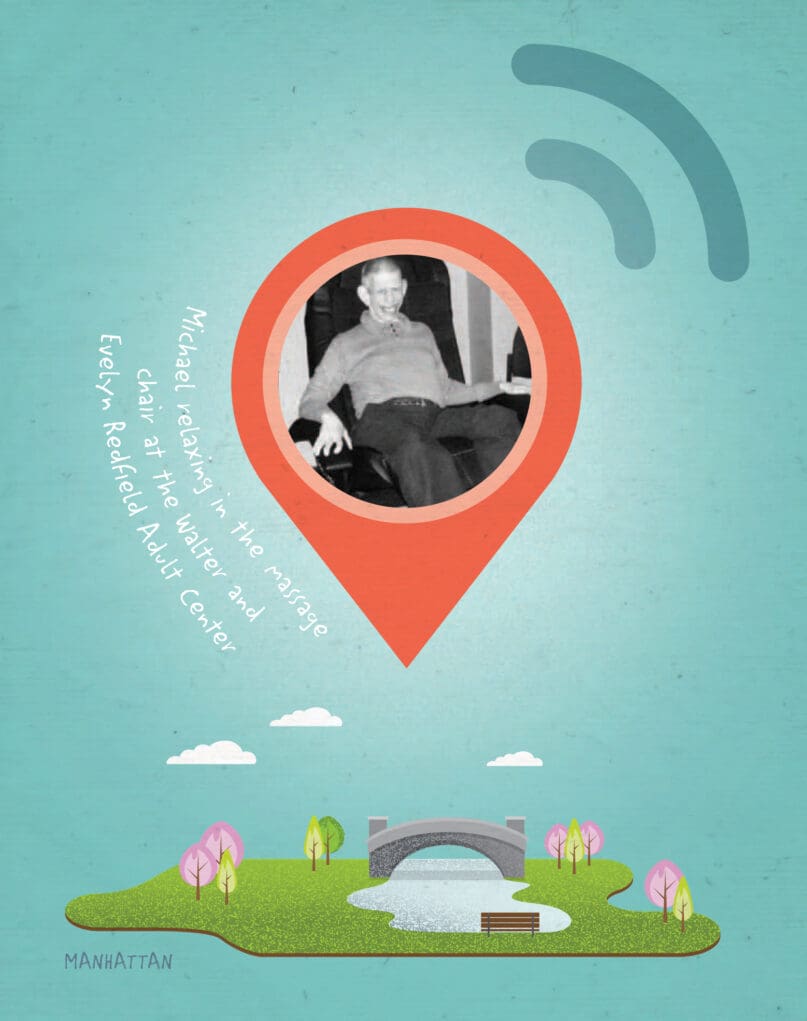
Use of Health/Fitness Technology
To increase the level of mind/body wellness at AHRC’s day programs, schools, and residences, fitness technologies like the Wii Fit, interactive exercise equipment, and relaxation rooms have been built into most facilities.
The Nintendo “Wii” and “Wii Fit” offer individuals the opportunity to participate in games, interact with peers, and get exercise. The Wii comes with five interactive sports games. Two players hold a vibrating controller, which senses their movement as they play the game. The Wii Fit offers workouts that emphasize controlled movements like yoga, strength training, aerobics, and balance games.
At Kensington IRA, resident Ann Marie, 49, belongs to a Special Olympics bowling team. The Wii has helped Ann improve her game by increasing her mobility. It also allows her to enjoy social activities — a major change in a woman who used to prefer sitting upstairs in her room watching DVDs. The exercise has boosted Ann Marie’s confidence, and has helped her discover a healthy hobby!
Many of AHRC’s Adult Day Service facilities have exer-gaming rooms. These workout areas combine gaming and physical activity with technology-based activities — user’s actual bodies are the controller. The rooms benefit individuals with developmental disabilities by facilitating better weight maintenance, improved abilities in activities of daily living, increased self esteem, and better rehab outcomes.
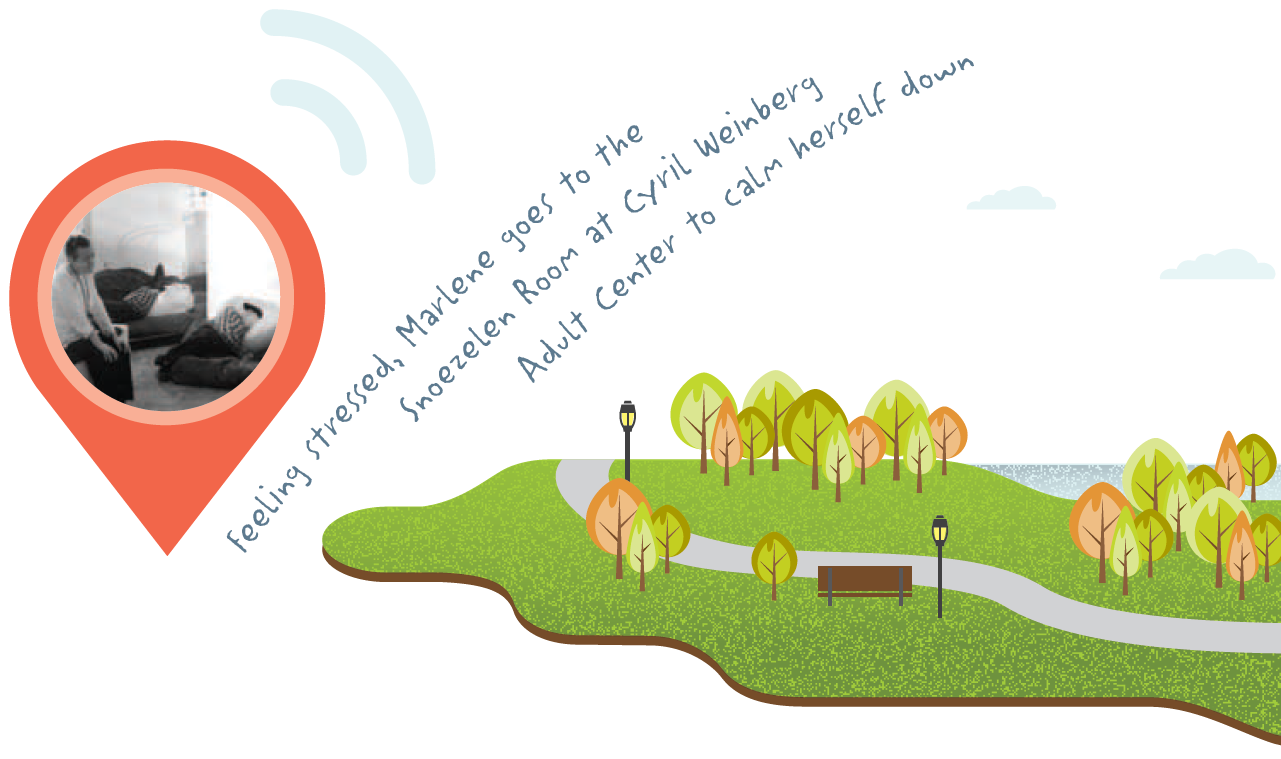
The “ExerStation” for example, an isometric exercise device that contains a backrest and single, non moveable pole with a PlayStation style controller on top, helps individuals work their upper body to build strength. The water rower, which can be altered depending on agility by adding a chair, allows users to row along with a compatible paddle boat game. The player is challenged to row faster, as the water filled disk turns on the machine.
To facilitate stress reduction, AHRC has developed SNOEZELEN rooms in several of its day programs and schools. Found to be particularly effective with individuals who are easily agitated and over-stimulated, Snoezelen rooms incorporate a specialized selection of sensory equipment and materials that help people learn to adapt their responses to sensory stimulation and relax. Each room is furnished with sights, sounds, textures, aromas, and motion technologies to meet the needs of specific populations according to age and ability.
Senior citizens served at AHRC’s Evelyn Redfield Center enjoy the facility’s music playing relaxation chair, night sky projector, and massage cushion. Utilized during their “relaxation group,” seniors learn breathing and concentration exercises that benefit their physical and emotional well-being.
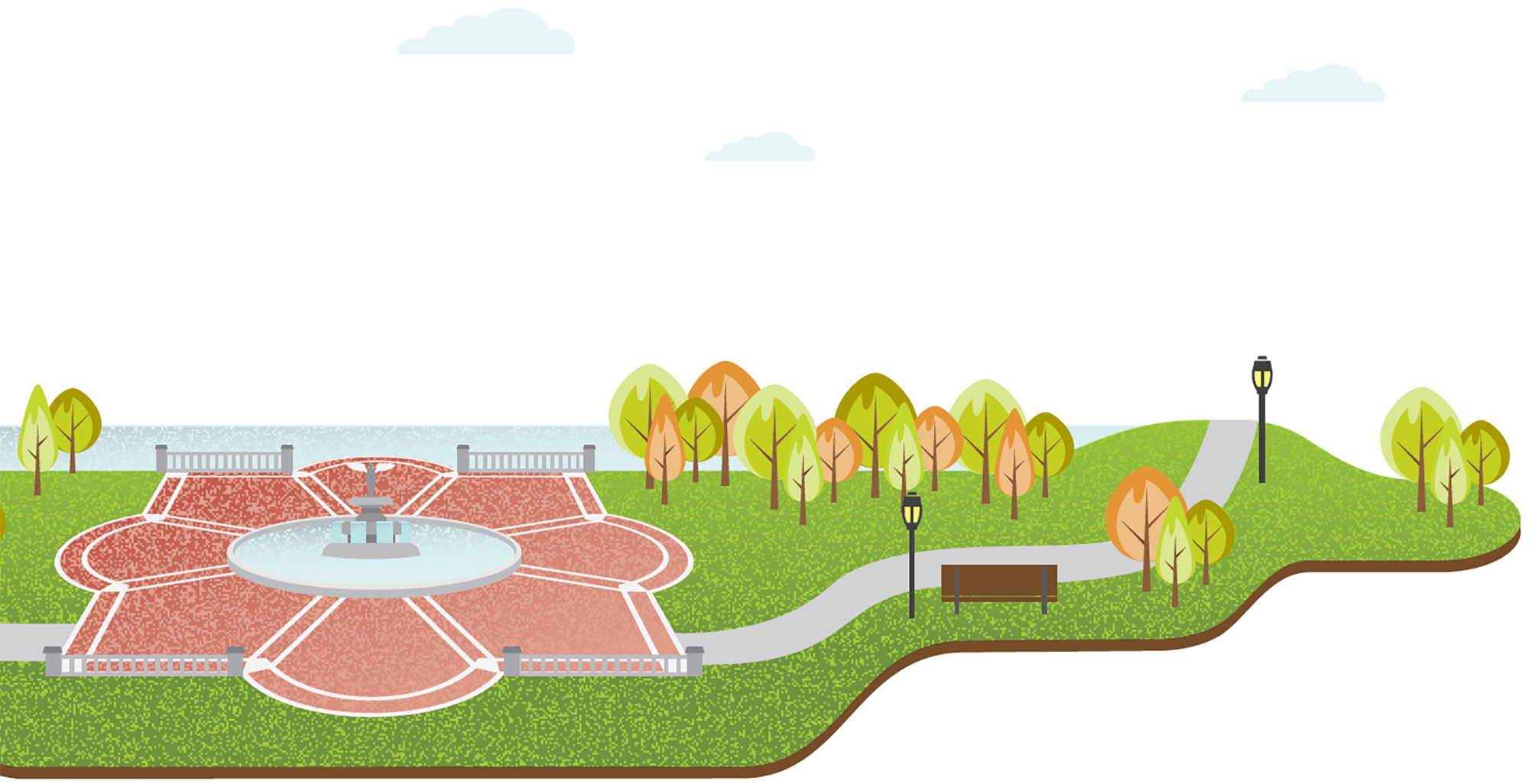
Biofeedback technology in which a person is trained to improve their body’s response to stress and anxiety by increasing awareness of physiological factors such as breathing and heart rate is also utilized. The Adult Day Services programs have been using the Emwave Personal Stress Reliever and the Emwave PC Stress Relief System to teach self-relaxation methods to the individuals AHRC supports through biofeedback. Both devices use a sensor to detect an individual’s pulse. A harmonious heart rhythm is associated with a reduced stress response.
The Personal Stress Reliever is a handheld device that provides both visual and auditory feedback to the individual. This feedback trains the user to recognize when they are achieving a harmonious heart rhythm and state of relaxation. The Emwave PC is a software system that includes a number of games on which one’s performance is enhanced by achieving a harmonious heart rhythm and state of relaxation.
According to Mary Donahue, Ph.D., BCBA, Director of Psychology, a number of individuals served in AHRC’s adult programs have found this approach to be a very motivating and effective self-relaxation strategy.
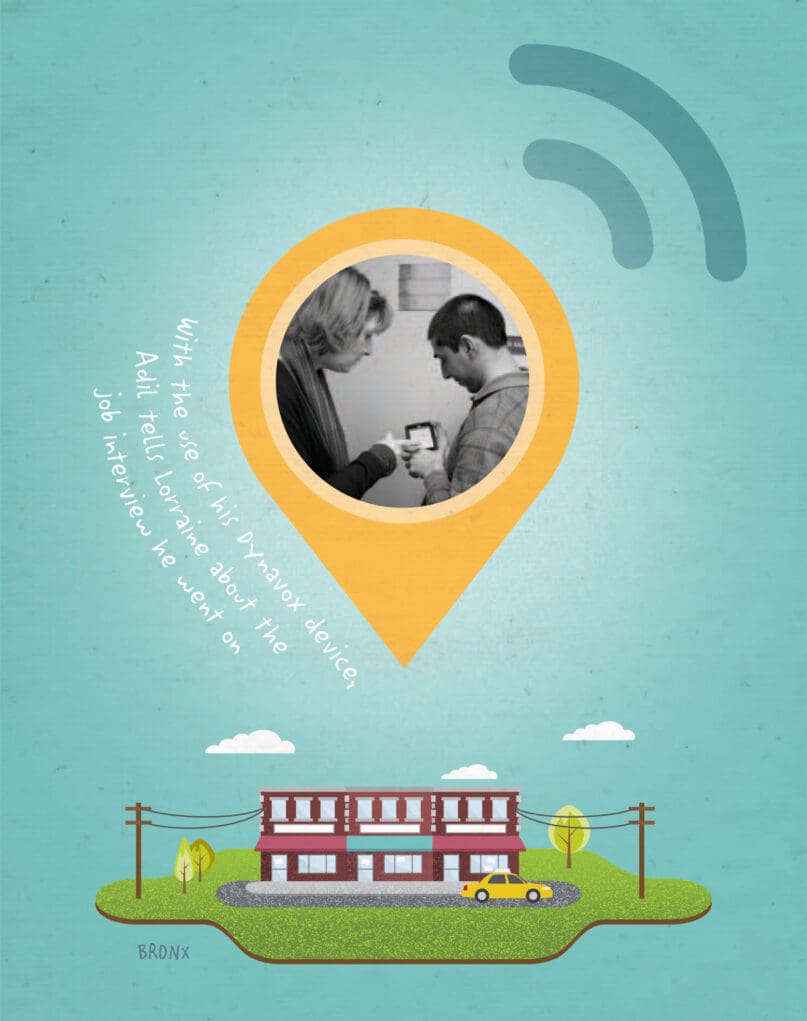
Use of AAC Devices
Many individuals with intellectual and developmental disabilities have difficulty communicating. This can lead to tremendous frustration. Alternative and Augmentative Communication devices offer a tool for communication to those who do not verbalize.
AAC devices can be utilized to effectively “voice” their wants, needs, preferences, feelings, and dislikes, as well as engage in meaningful communication. These devices include simple picture books, wallets, mechanical devices, and high-tech communication devices that employ electronic voice output, like the highly publicized iPod Touch’s AAC app, Proloquo2Go.
Initially created for people with Parkinson’s Disease, AAC devices are now used by clinics and organizations serving people with disabilities and traumatic brain injuries (TBI) functioning at different intellectual levels with differing physical abilities. Since many individuals with developmental disabilities, especially individuals with autism spectrum disorder, tend to prefer visual stimuli, these portable technologies have proven very beneficial.
The AAC devices are programmed for the unique needs and preferences of specific individuals — a truly person-centered process. From the vocabulary to the accent of the speaking electronic voice and sound of the “voice” itself, the user of the device is included in all design decisions.
Hector Rodriguez and Luis Clemente — both AAC device users who attend AHRC’s Bronx Day Hab Service — actually conduct campus tours at Bronx Community College using only their alternate communication technology.
Feeling like a part of society has changed many AAC users behavior dramatically. Now that these women and men can “voice” what they are thinking and what may be bothering them, they are happier.
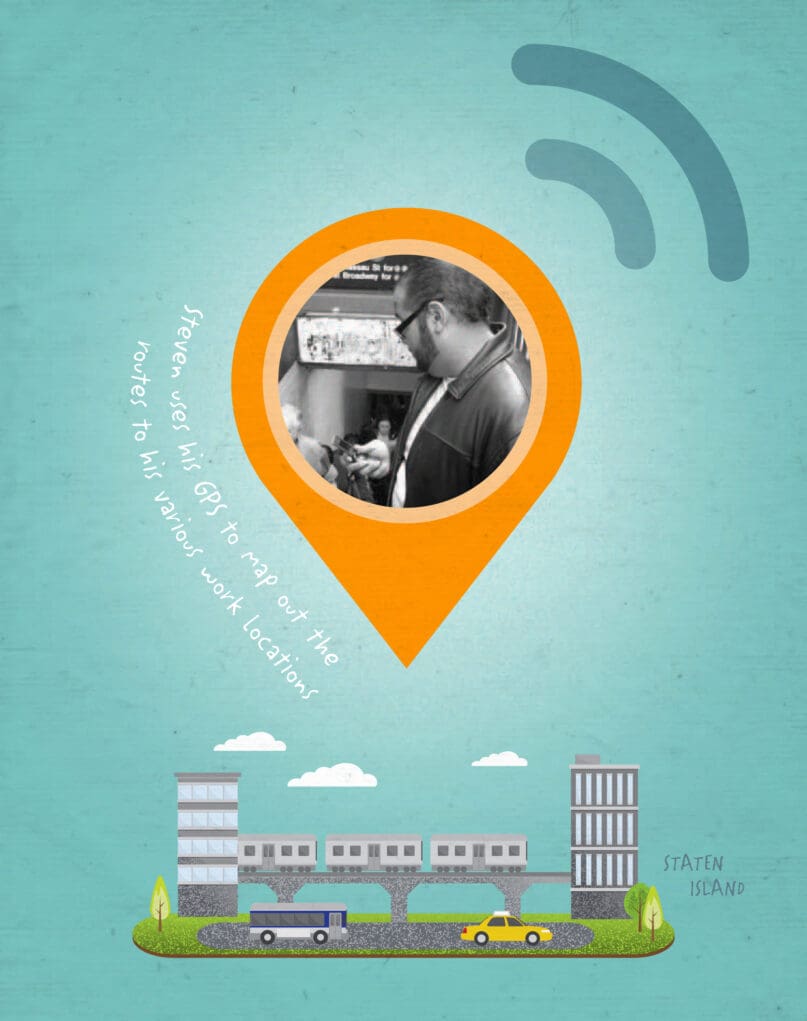
The Use of Technology in Travel Training
For 50 years, AHRC’s Travel Training program has afforded thousands of individuals with developmental disabilities the opportunity to live independent lives because of their ability to travel on public transit without assistance.
In 2006, the AHRC Travel Training Program began utilizing GPS technology as a means to create a safer training environment for individuals with disabilities. By providing each program participant with a GPS enabled cell phone, trainers are able to track their location in real-time when they are out in the community. The software also makes it possible to generate reports retroactively, providing a “bread crumb trail” indicating a person’s route taken, the times they arrived, and the speed at which they traveled.
This technology represents a big step forward. Travel trainers, once having to work with the constant danger of losing their trainees can now successfully carry out their responsibilities using the latest technology to know an individual’s whereabouts.

Use of Technological Devices in Daily Living
Though not as interactive, daily living technologies benefit the lives of the individuals AHRC serves in numerous settings. For residences that cater to the elderly and medically frail populations, these technologies alleviate excess stress on both staff and the individuals requiring attention.
Assistive devices such as the Sara 3000, a
standing and raising aid which enables a single
caregiver to provide first-class care during
routine handling activities such as transfers
and toileting, and the Arjo Trixi lift, a supportive
lifting technology, help elderly and medically
involved individuals receive necessary care
in a comfortable fashion.
What is exciting about the new equipment
Ken Cronin, Director of Assistive Technology
and software we use is not the technology
so much as the opportunities that they open
up for our individuals.
“Whether its using one’s voice to control a computer, touching
a screen instead of using a mouse, having a phone with GPS tracking, waving your hand at a camera to play a game or using an iPod for augmentative communication — the technology makes tasks that once seemed impossible a couple years ago common place and natural,” said Ken Cronin.
62 years ago, simple life-tasks were often very challenging for people with disabilities. However, our world has and will continue to develop new life-changing technologies. And many of these developments can be used to assist in easing challenges met by individuals with disabilities every day. Here at AHRC, we will continue to focus our attention on the unique needs of each individual that we serve as these new technologies emerge and we will find ways to put them to good use in bettering lives. That is our mission.
HIGHLIGHTS OF THE YEAR ENDING JUNE 30, 2010
In 2009 and 2010, AHRC New York City continued to provide a wide array of services and supports to individuals with developmental and intellectual disabilities, and their families. In addition, new services and supports were developed to meet emerging needs and existing programs were enhanced and expanded. All new programs and services designed by AHRC aim to use the principles of person-centered planning with the goal of creating truly individualized supports that are responsive to the choices expressed by the people who will use them. The new individualized planning and person centered values have also been integrated into existing program design, allowing individuals to have a far greater say in what they do every day, and how they do it.
SERVICES AND SUPPORTS FOR CHILDREN AND ADOLESCENTS
AHRC serves a total of approximately 1,000 children in its preschools, elementary school and middle/high school. Its education programs have provided services to increasing numbers of children on the
autism spectrum for well over fifteen years. Additionally, AHRC provides hundreds of school-age children with camping and recreational opportunities, as well as educational advocacy, and
supports sisters and brothers of the children served in our programs and services who are interested
in meeting other siblings of individuals with disabilities. Highlights of the years include:
- The second group of graduates from AHRC’s Middle/High School will complete their studies this June. Most of the graduates have secured placements in AHRC adult programs with help from the Departments of Day Service and Employment and Business Services. Two graduates will attend AHRC’s Melissa Riggio Higher Education Programs at Kingsborough Community College and the College of Staten Island.
- A collaborative venture with Pace University has provided eight AHRC Middle/High School students the opportunity to attend classes at Pace University. Working with Pace interns, our students have expanded their computer skills enormously.
- AHRC’s Department of Educational Services was awarded a prestigious grant from the Walmart Foundation to fund a school to community transition project entitled Building Futures. Matching funds were awarded by the Joseph LeRoy and Ann C. Warner Fund, Inc.
- The Department of Educational Services began a joint venture with The Jewish Guild for the Blind to better serve visually impaired preschoolers in our preschool programs.
- Preschool expansions: AHRC’s Esther Ashkenas Central Park Early Learning Center expanded with 4 new classrooms serving 24 additional youngsters between the ages of 3–5. At the request of NYSED, the Francis of Paola Early Learning Center added one class for 8 students and AHRC has received approval to add one class of 6 students to the Howard Haber Early Learning Center in July 2011.
- AHRC’s Bronx Early Childhood Direction Center (ECDC) assisted over 500 families with Early Intervention and CPSE processes. The Bronx ECDC provided more than 24 workshops to parents and professionals on a variety of topics. Additionally, the Bronx ECDC was a work site for Summer Youth with Special Needs.
- Bridges to Health (B2H), a program which serves children in the Foster Care System has expanded greatly and now has 40 children enrolled in AHRC’s Department of Day Services with 20 more children waiting to be served. AHRC’s Home Care Department has also provided skills building and planned respite services to 6 children in the Bridges to Health (B2H) program through contracts with Health Care Integration Agencies.
- AHRC’s Department of Educational Advocacy served over 150 individual families in the last year. Twenty-five training sessions for more than 500 parents and professionals were held on a variety of topics relevant to the education of children with disabilities and their rights under the law. AHRC’s Advocate offered training to parents at Bronx A.N.G.E.L.S. Public School 304, SKIP of New York, and provided training to the NYC Department of Education, Office of School Health where over 100 public health assistants, Public School Nurses, and Supervisors received training on Autism.
- AHRC’s Sibling Service offered sib-shops for children, a support group for teens and a support group for adult siblings. The program is now serving more siblings than ever before and held its third annual networking event, “The Future is Ours” to promote sibling services.
SERVICES AND SUPPORTS FOR ADULTS
AHRC provides services to approximately 1,400 adults in its Adult Day Centers and programs, 1,300 individuals through its division of Employment and Business Services, and 550 adults through the opportunities provided in its Residential Services. The philosophy of Person Center Planning has been incorporated to a greater and greater extent in all our programs, services and supports for adults. Highlights of the year include:
- The numbers of individuals attending the AHRC Melissa Riggio Higher Education Programs at Kingsborough Community College and Community College of Staten Island have been expanded and other college options may be offered to additional people in the near future.
- AHRC’s Department of Adult Day Service Enhanced Supported Employment placed a total of 19 people in paid jobs. Each person placed was previously enrolled in our Day Hab/Prevocational Waiver program. AHRC’s Department of Employment and Business Services was awarded an additional 72 opportunities from the Office of People with Developmental Disabilities, to provide Enhanced Supportive Employment to individuals with significant barriers to employment who may benefit from job customization and longer-term support on the job.
- Two of the four new AHRC Day Centers expected to open in Brooklyn have opened, one in Sheepshead Bay and the second in Bushwick. The new Centers serve individuals using community resources and everyone spends the majority of their day engaged in community activities. The last two sites will be located on Kings Highway in Flatbush and Rockaway Parkway in Canarsie. The anticipated dates for the opening of Kings Highway and Canarsie are later in 2011. The four Brooklyn Programs replace the Dean O’Hare Day Program and the Siegel Center that both lost their leases – an opportunity that allowed for smaller, more community based programs to replace them.
- Day Habilitation without Walls is a service that begins and ends in a person’s home, with individuals spending the bulk of the day in the community engaged in individualized activities based on their preferences and choices. Some of the activities chosen by individuals are volunteering in places such as Material for the Arts, Dress for Success, as well as engaging in cooking, pottery and photography classes.
- Technology supports such as those listed in this report have been purchased and are now used by many people to support a variety of functions. Examples of apps purchased include Dragon Dictation which changes speech to text, Speak4it, a mobile local search app using the internet to search for restaurants, museums, stores etc, Tap to Talk, an application that offers icons of phrases, emotions and actions, Lose It, a weight loss application recording exercise regiment and food intake, and Relax with Andrew Johnson, for relaxation with soothing music with voice guide leading to calmness. Each of the applications is either free or costs 99 cents, making the devices fluid and mobile for a small cost after the purchase of the equipment.
- This year, AHRC has successfully trained 149 people to travel independently, using a curriculum plus GPS systems. AHRC New York City in collaboration with District 75, held a successful travel training celebration, 50 Years of Travel Training. Thousands of individuals have been trained over five decades at AHRC and the Department of Education programs that had their beginnings at AHRC in the 1970s.
- AHRC’s Department of Employment and Business Services was awarded three, three-year Out of School Youth contracts from the New York City DYCD (Department of Youth and Community Development). Brooklyn was awarded a janitorial and a food service training contract and Queens was awarded a contract in janitorial training. These contracts serve a blend of disabled and nondisabled youth, 18 through 21. After basic skills and work readiness, students do a hands-on internship in their field of training.
- Internship placements for janitorial services include: Long Island College Hospital, Brooklyn Hospital, and New York Queens Hospital. Internship placements in the area food service take place at: Pace University, the NY Stock Exchange, and NY Mercantile Exchange.
- In 2010, AHRC New York City opened ShredAbility, an affirmative enterprise that provides secure document destruction and recycling services to businesses. ShredAbility employees 10 individual with developmental disabilities and plans to expand its workforce to over 60 employees. ShredAbility is a member in good standing of National Association for Information Destruction, which is the highest standard in the shredding industry.
- AHRC’s Department of Employment and Business Services has entered into a corporate partnership with American Maintenance to provide maintenance services at Westchester Community College. This new business gives us the opportunity to provide quality services in a fast pace environment and offers rewarding employment to over 20 people with developmental disabilities.
- AHRC’s Department of Employment and Business Services worked with over 200 employers to assist in the employment of more than 496 people with disabilities in 2010.
- New residential opportunities developed in the last year are AHRC’s Dickson-Goodman Apartments, on 126th Street in Harlem, Manhattan, the College Point IRA in the College Point area of Queens, and a one person supervised IRA on West 157th Street in Washington Heights.
- The Dickson-Goodman Apartments, modeled after the successful Bloomberg Apartments in Jamaica, are residential options for individuals with developmental disabilities needing 24/7 nursing care. The complex is comprised of four unique apartments that are each home to six individuals who might not otherwise have the opportunity to live in the community because of their special medical needs. Located in upper Manhattan, the Dickson-Goodman Apartments provide the people who live there with the cultural and social activities that NYC has to offer.
- The College Point IRA, formerly the Striar IRA, is now a newly re-modeled home to six young men who need intensive support and oversight.
- AHRC’s ADEPT Program, continues to evaluate individuals with developmental disabilities showing signs of cognitive/functional decline in order to rule out Dementia and other age-related disorders as possible etiologies. The ADEPT team includes two psychologists, a physician, a social worker, a rehabilitation administrator, and other specialists as needed. Each evaluation is tailored to the specific needs of the individual, and includes recommendations and continuing follow-up care. In 2011, the team has been actively involved in outreach, education, and participation in a National Task Group on Dementia Screening Practices.
SERVICES AND SUPPORTS FOR INDIVIDUALS OF ALL AGES AND THEIR FAMILIES
AHRC offers home care services, a variety of clinical services including testing and evaluation, service
coordination and information on entitlements, camping and recreation, as well as family education to several thousand individuals annually. Highlights of the year include:
- AHRC has formed a cross functional team (CFT) to address the needs of individuals on the Autism Spectrum currently enrolled in all of our services and supports. The goal of the CFT is to identify “evidence based best practices in treatment” to develop a curriculum for staff training and to implement these best practices in all aspects of our support system. The subcommittee of the Board – AD HOC Behavioral Health and Program Supports – has partnered with the CFT on this initiative.
- The Home Care Department continued to provide Community Hab to hundreds of individuals. There was an increase in the numbers of individuals living in non-certified housing with supports from our Home Care Department. And, the Home Care Department maintained its ability to accept new participants into the Traumatic Brain Injury Waiver throughout 2009–10.
- AHRC continued to provide Medicaid Service Coordination (MSC) to individuals and their families in all five boroughs. This program continues to grow and AHRC is currently serving over 1800 individuals. New York State OPWDD implemented significant changes to MSC this past year. AHRC New York City implemented these changes while continuing to focus on providing a quality service to the individuals and families supported.
- Camp Anne had 150 staff from 30 countries last summer. There was also an increase in staff from the United States. Staff training was enhanced and eight staff completed a six credit college course, A Multi-Disciplinary Approach to Developmental Disabilities, while they were employed at Camp. Camp Anne combined teens and children in two sessions, serving an additional 20 teens. Seventeen foster children in the Bridges to Health (B2H) program were also successfully served. The camp facility was upgraded this year. Several cabins were insulated; new windows, floors, lighting and details were installed; a new adaptive swing was purchased and pathways around the kitchen and main office were repaired and landscaped.
- Katy Isaacson and Elaine Gordon Lodge, formerly called Harriman Lodge, was dedicated in memory of Katy Isaacson, wife of former Board Member Len Isaacson, and her friend, AHRC supporter Elaine Gordon. The Lodge served 340 guests in 5 separate sessions. Guests enjoyed swimming, arts, sports and boating with a new boat dock at the far end of the lake, which allowed them to take the boat across the lake to a second dock.
- Recreational activities at AHRC continued this last year and were expanded. The Recreation Department opened its 10th after school program in 2010 in the Sheepshead Bay area of Brooklyn working with direct support staff and supportive administrative staff at this Department of Education, District 75 site. The Recreation Department now works closely with Pace University’s Service Learning Program, as do other AHRC departments. AHRC’s Computer Club meets at Pace’s well equipped computer lab on Saturdays. Additionally, thanks to a grant from NYSARC, Inc., AHRC is providing a sports clinic over four weekends for 18 students from AHRC’s elementary and middle high school. The Recreation Department partnered with Super Soccer Stars, a non profit that serves individuals on the autism spectrum.
- AHRC’s Article 16 Clinic provided service to over 800 individuals on an ongoing basis. Services were provided at Maiden Lane, at 2488 Grand Concourse, and in various day programs and residences throughout the city.
- In the last year, the Clinic’s Crisis/In Home Behavior Management Team, comprised of two very experienced psychologists, provided services to more than a hundred Bronx families.
- The AHRC Guardianship Program, which serves as standby and primary guardian for more than 80 individuals, received assistance from several New York City major law firms who provided pro bono lawyers and paralegals to assist families in filling out the petitions to the court that must be filed in order to obtain legal guardianship for a loved one with a developmental disability.
- The AHRC Entitlements Unit has assisted hundreds of individuals and families in the past year in resolving their Medicaid and/or Social Security Benefit problems. Unit staff has also presented at many family education venues including AHRC’s Family Education Series.
- AHRC’s Family Education Series has reached over fifteen hundred new families this past year. Two sessions monthly, one at 83 Maiden Lane and another in an outer-borough AHRC facility, have been held on topics of interest to families of young children, as well as adults. A consumer driven series, new topics are introduced each year as participating families inform AHRC of what might be of interest to them.
ADMINISTRATIVE SERVICES
Many administrative departments support AHRC’s core business, that of providing services to individuals with developmental disabilities and their families. These administrative services are essential to the running of the organization and include corporate compliance, IT or information technology, human resources, employee training and development and many other areas.
- Corporate Compliance refers to the Agency’s ability to operate in an ethical and legal way, to follow the laws, regulations and policies established by governmental entities, insurance programs and payers. As AHRC has expanded its mission, compliance with federal, state and city rules is an increasing challenge. Day-to-day compliance with Medicaid requirements is a major focus of Compliance staff. Departmental compliance audit staff routinely monitor billing documentation, program safety issues, and other compliance areas. The internal audit function monitors fiscal compliance and conducts special audits at the direction of the AHRC Board of Directors’ audit committee.
- With the budget challenges currently faced by AHRC, the Compliance team has ensured that, for every claim to Medicaid, the organization has the required documentation to back up the claim. Budget pressures can also impact safety in our programs and compliance staff work in partnership with the program departments to ensure that safety is not compromised in any way.
- AHRC’s commitment to the quality of care is a cornerstone in all of the programs, services and supports that are provided to individuals through out the organization. In the last year, AHRC has furthered this commitment by thoroughly examining and redefining our incident review process and advocacy efforts to ensure that individuals are protected from harm.
- AHRC’s IT Department, working with key staff in all program areas throughout the organization has identified and begun the implementation of a new comprehensive consumer electronic health records management system. This new system will be the repository of all information on all the individuals served by the organization. This will allow for the sharing of necessary information and will help to provide a better experience to families who will no longer have to provide the same information time and again to obtain services. This is a multi-year project that will include all AHRC staff in every strata of the organization and will lead to new ways of doing business.
- Over the past year, the Department of Organizational and Employee Development continued employee outreach and other initiatives. In the area of staff training, new E-learning training tools and sessions have been instituted and new training courses have been introduced.
- AHRC continues to be an approved internship site for the APA, the American Psychological Association, providing clinical supervision and didactic training in the area of research on training techniques. Other internship opportunities within the organization have been expanded with over one hundred interns working throughout the organization in the last year. It is our hope that by introducing students to and training them in the area of developmental disabilities, they will wish to pursue their careers with our population upon completing their degrees.
- Superior Direct Care, AHRC’s affiliate, continues to work collaboratively with AHRC New York City programs and services to support the needs of the departments as well as those of other similar organizations in the city. Superior provides a strong pool of candidates to fill full time positions within AHRC, in fact fifty-four Direct Support Professionals were hired by the Department of Residential Services from the Superior staffing pool last year alone.
OTHER AHRC NEWS
In 2009, AHRC celebrated its 61st anniversary with New York State Senator Thomas Morahan and New York State Senator Roy McDonald receiving AHRC Humanitarian Awards. Additionally, AHRC kept its members constantly abreast of the shifting and difficult political landscape that greatly affects the work that we do and was particularly tumultuous in the last year.
AHRC New York City looks forward to offering people with developmental and intellectual disabilities, and their families, greater opportunities to lead productive and fulfilling lives in the community in the years to come.
EXPENSES
For the Year Ending June 30, 2010
| Total Support for the Current Period | $ 238,203,923 |
Program Services
| A. Educational Services | $ 31,631,818 |
| B. Adult Day Programs | $ 61,644,287 |
| C. Residential Services | $ 58,610,330 |
| D. Family and Clinical Services | $ 9,541,890 |
| E. Employment and Business Services | $ 26,647,044 |
| F. Camping & Recreation Services | $ 4,033,147 |
| G. In-Home Services | $ 6,477,220 |
| H. Family Support Services | $ 2,457,727 |
| I. Superior Direct Care Inc | $ 6,906,564 |
| J. AHRC Home Care | $ 1,072,469 |
| Total Program Services | $ 209,022,496 |
| Supporting Services | $ 26,564,273 |
| Total Expenses | $ 235,586,769 |
| Total Support Less Expenses | $ 2,617,154 |
| Unrestricted Net Assets—June 30, 2009 | $ 34,509,663 |
| Unrestricted Net Assets—June 30, 2010 | $ 37,126,817 |
The complete financial statements, including the related notes and auditor’s report, are available upon request.
AHRC NEW YORK CITY PROGRAMS, SERVICES, & SUPPORTS
AHRC Administrative Offices
83 Maiden Lane
New York, NY 10038
Phone: 212-780-2500
Fax: 212-780-2353
Department of Adult Day Services
Bronx Day Habilitation Services, Bronx NY
Dorothy and Michael Styler Center, Bronx, NY
William F. May Adult Center, Bronx, NY
Dean O’Hare Center, Brooklyn, NY
Stephen B. Siegel Center, Brooklyn, NY
Wendy M. Siegel Center, Brooklyn, NY
Bush Terminal Day Hab, Brooklyn, NY
Traumatic Brain Injury Services, Brooklyn, NY and Bronx, NY
Melissa Riggio Higher Education Program at Kingsborough Community College and the College of Staten Island
Sobriety Day Habilitation, Brooklyn, NY
Betty Pendler New York League Work Center, New York, NY
Walter & Evelyn Redfield Center, New York, NY
Fisher Center, New York, NY
Enhanced Supported Employment, All 5 Boroughs
Cyril Weinberg Center, Long Island City, NY
Far Rockaway Center, Far Rockaway, NY
Joseph T. Weingold Center, Sunnyside, NY
Day Hab Without Walls, All 5 Boroughs
Bridges 2 Health, All 5 Boroughs
Business and Employment Services
HIRE Supported Employment Program, Manhattan, Queens, Bronx, Brooklyn & Staten Island, NY
CAREERS in Janitorial and Food Services, Queen, NY
CAREERS in Hotel Housekeeping, Manhattan, NY
Job Connection Center, Brooklyn, NY
Hudson River Messengers, Manhattan, Brooklyn, Queens, Bronx & Staten Island, NY
Horizons Day Hab & Prevocational Center, Bronx and Brooklyn, NY
Horizons Day Habilitation without Walls, Brooklyn and Staten Island, NY
Careers Young Adult Internship Program (YAIP), Staten Island, NY
OPTS Senior Retirement Group, Bronx, NY
HIRE Community Employment Supports, Brooklyn, Bronx, Manhattan and Staten Island, NY
Hudson River Services, All 5 Boroughs
The Enhanced Supported Employment Program Manhattan, Brooklyn, Queens, Bronx and Staten Island NY
OPWDD Employment & Training Program Manhattan, Brooklyn, Queens, Bronx and Staten Island NY
Department of Camping and Recreation
Camp Anne, Ancramdale, NY
Katy Isaacson & Elaine Gordon Lodge, East Jewett, NY
Recreation Services, New York, NY
Day Respite Programs
Brooklyn, Bronx, Manhattan, Queens, Staten Island, NY
Weekend Hotel/Recreation Respite
Brooklyn, Bronx, Queens, Staten Island, Manhattan, NY
Department of Family and Clinical Services
Article 16 Clinic, Manhattan & Bronx, NY
Bronx Early Childhood Direction Center (ECDC), Bronx, NY
Legal Services: Guardianship and Future Care Planning
New York, NY
Bronx Crisis Team
Bronx, NY
Family Reimbursement Fund—Francesca Nicosia Fund
All 5 Boroughs
Sibling Support Services
New York, NY
Department of Medicaid Service Coordination
serving all five boroughs
Department of Individualized Supports
serving all five boroughs
Department of Educational Services
Howard Haber Early Learning Center, Bronx, NY
Brooklyn Blue Feather Elementary School & Evaluation Center, Brooklyn, NY
AHRC Middle/High School, Brooklyn, NY
Francis of Paola Early Learning Center & Evaluation Center, Brooklyn, NY
Esther Ashkenas Early Learning Center, New York, NY
Astoria Blue Feather Headstart, Astoria NY
Department of Educational Advocacy
serving all five boroughs
Department of In-Home Services
AHRC Home Care Inc.
In-Home Respite
Community Habilitation Services
Superior Direct Care Services (SDC)
Department of Residential Services
95th Street IRA, New York, NY
Fineson House, New York, NY
Melvin W. Kraus Residence, New York, NY
Malozemoff Residence, New York, NY
Dixon Goodman Apartments, New York, NY
Phyllis and Harold B. Jacobs Residence, New York, NY
Manhattan IRA, New York, NY
New Gotham, New York, NY
East 106th Street, New York, NY
Rupert Towers, New York, NY
Elena Agovino Residence, Bronx, NY
Netherland IRA, Bronx, NY
Chicquor Residence, Bronx, NY
Greenberg Residence, Bronx, NY
Fairfield Avenue IRA, Bronx, NY
Hunter Avenue IRA, Bronx, NY
Mayflower IRA, Bronx, NY
Thurman Munson Residence, Bronx, NY
Wilson Avenue IRA, Bronx, NY
81 Ocean Parkway IRA, Brooklyn, NY
400 Ocean Parkway IRA, Brooklyn, NY
Lillian and Jack Isaacson Residence, Brooklyn, NY
Blue Feather—Minna Bober IRA, Brooklyn, NY
Betty Carubia IRA, Brooklyn, NY
Seymour Rubin IRA, Brooklyn, NY
Gus Jacobs IRA, Brooklyn, NY
Kings Highway IRA, Brooklyn, NY
Striar House, College Point, NY
Mina and George Hirsch Residence, Little Neck, NY
Bellrose IRA, Bellrose, NY
Glenn Oaks IRA, Glenn Oaks, NY
163rd Place IRA, Flushing, NY
Eugene Fierstein Residence, Flushing, NY
Union Turnpike, Flushing, NY
186th Street, Fresh Meadows, NY
204th Street IRA, Bayside, NY
Bayside IRA, Bayside, NY
College Point IRA, College Point, NY
Helen Armstrong Residence, Ozone Park, NY
Fresh Meadows Residence, Fresh Meadows, NY
Cunningham League IRA, Fresh Meadows, NY
Gruenstein Residence, Bayside, NY
Mitchell & Susan Bloomberg Apartments, Jamaica, NY
North Hills Leagues IRA, Bayside, NY
58th Avenue IRA, Elmhurst, NY
254th Street, Little Neck, NY
Jimmy O’Neil Residence, Fresh Meadows, NY
Pembrooke IRA, Bayside, NY
Peterson House, Staten Island, NY
Ralph I. Rossi Residence, Staten Island, NY
Kensington IRA, Staten Island, NY
East Tenafly IRA, Staten Island, NY
Lander Avenue, Staten Island, NY
Tysens Lane, Staten Island, NY
Supportive Apartments
Brooklyn Apartments, Brooklyn, NY
Staten Island Apartments, Staten Island, NY
Queens Apartments, Queens, NY
Bronx Fordham Hill Apartments, Bronx, NY
Manhattan Apartments, New York, NY
Overnight Respite
Thelma Ragland Respite Houses Brooklyn, Bronx, Manhattan, Queens, Staten Island
Department of Finance, Budgets and Contracts
Department of Real Property
Department of Public Information
Department of Organizational and Staff Development
IT Department
Department of Administrative Services
ACCESS Community Health Center
(formerly AHRC Healthcare Inc.) Manhattan and Bronx, NY
ACCESS Community Health Center
(formerly AHRC Healthcare Inc) Substance Abuse Services
OFFICERS AND BOARD OF DIRECTORS AS OF JUNE 2011
OFFICERS
Arlene Pedone*
President
Melvin Gertner
1st Vice President
Marilyn Jaffe Ruiz
2nd Vice President
Gail Fishkind
3rd Vice President
Genevieve O ’Neil
4th Vice President
Anne Gordon
5th Vice President
Victoria Liska
Treasurer
Joshua Hirsch
Financial Secretary
Mark Bini
Recording Corresponding
Secretary
BOARD OF DIRECTORS
Toni Agovino
Sabretta G. Alford
Marie Lourdes Charles
Raymond Ferrigno
Blanche Fierstein*
Edward J. Garvey
Laurence B. Isaacson
Laura J. Kennedy
Charles King Jr.
Meri Krassner
Edward J. Leahy
James P. Murphy
Edith Niedert
Nancy Petrino
Ruth Pickholz
Joan Raineri
Michael N. Rosen
Nilsa Santiago
Germaine Laviscount Scott
Jeanne Sdroulas
Lee Slonimsky
I. William Stone
Sharyn J. VanReepinghen
Tina Veale
Kerry Wright
*AHRC mourns the passing of Arlene Pedone and Blanche Fierstein
Michael Goldfarb
Executive Director
Judith DeIasi
Assoc. Exec. Director
Ellen Rosman
Associate Executive Director
Kathy Broderick
Acting Assoc. Exec. Director/Operations
Amy West
Chief Financial Officer
Ann Greenberg
Founder
Like AHRC, the AHRC New York City Foundation helps thousands of children and adults with developmental disabilities achieve day to day living that is as rich, absorbing and worthwhile as possible, and to provide opportunities for them to live up to their maximum potentiality in the community.
As a supporter of the AHRC New York City Foundation you can help!
You can support the AHRC New York City Foundation in a variety of ways. The AHRC New York City Foundation is grateful for all contributions including gifts of cash or securities, as well as those in the form of charitable bequests through wills and estate plans. The AHRC New York City Foundation’s pooled income fund can benefit both the Foundation and you, the donor. Memorial gifts honoring people on special occasions will be acknowledged as requested by the donor.
Your tax deductible contribution to the AHRC New York City Foundation, Inc. can be made
at any time by check, money order or credit card.
For further information about sending a donation or about the tax and income benefits
of making a planned gift, write or call:
AHRC New York City Foundation, Inc.
83 Maiden Lane
New York, NY 10038
212 780 2690
www.ahrcnycfoundation.org
Written by: Shirley Berenstein and Kate Mammolito
Design: PAIR design, LLC (CA)
Illustration: Chad Wong
www.pairdesign.net
